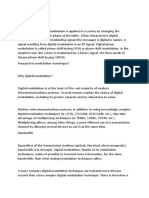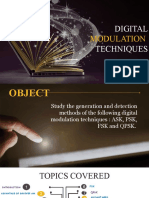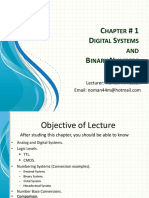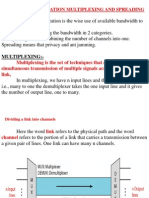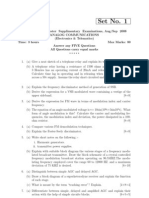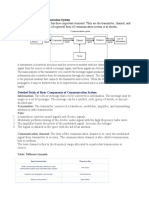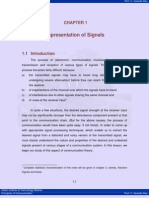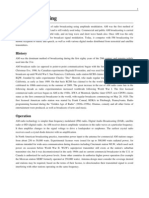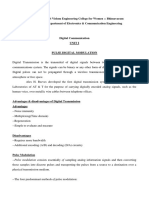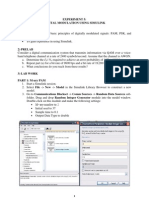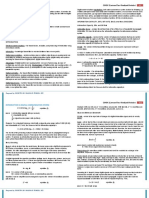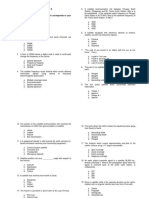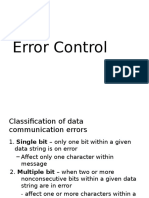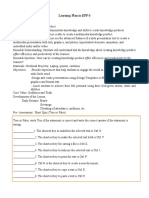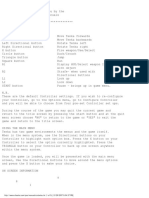0% found this document useful (0 votes)
210 views21 pagesIntroduction To Digital Communication
This document provides an introduction to digital communication. It discusses electronic communications, digital modulation, and digital communications systems. Key aspects include:
- Digital modulation involves transmitting digitally modulated analog signals between points in a communications system.
- Digital communications transmit digital pulses between points and include digital radio and digital transmission systems.
- Basic elements of a digital communication system include information source, transmitter, channel, receiver, and destination.
- Advantages are noise immunity, error detection and correction, and compatibility with time-division multiplexing. Disadvantages are bandwidth size and complex circuitry.
Uploaded by
AJay LevantinoCopyright
© © All Rights Reserved
We take content rights seriously. If you suspect this is your content, claim it here.
Available Formats
Download as PPTX, PDF, TXT or read online on Scribd
0% found this document useful (0 votes)
210 views21 pagesIntroduction To Digital Communication
This document provides an introduction to digital communication. It discusses electronic communications, digital modulation, and digital communications systems. Key aspects include:
- Digital modulation involves transmitting digitally modulated analog signals between points in a communications system.
- Digital communications transmit digital pulses between points and include digital radio and digital transmission systems.
- Basic elements of a digital communication system include information source, transmitter, channel, receiver, and destination.
- Advantages are noise immunity, error detection and correction, and compatibility with time-division multiplexing. Disadvantages are bandwidth size and complex circuitry.
Uploaded by
AJay LevantinoCopyright
© © All Rights Reserved
We take content rights seriously. If you suspect this is your content, claim it here.
Available Formats
Download as PPTX, PDF, TXT or read online on Scribd
/ 21





